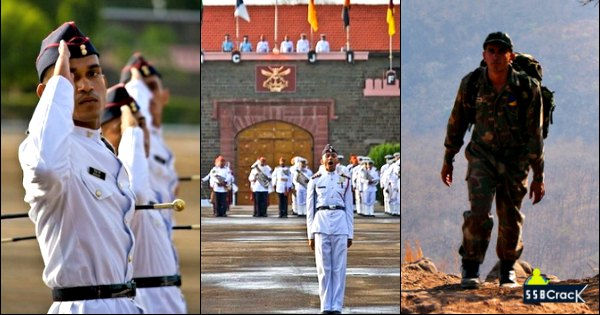NCC : Unleashing The Hidden Potential !
- Brig Advitya Madan

- Jun 18
- 4 min read
Editor's Note:
This article covers several less known aspects about the NCC , including its history ,role, and vast potential . The experience of the author as the NCC Group Commander in two states gives his words validity and authority. His vision for enhancing the role of NCC merits consideration.
It is well known that India has the largest population of youth in the world .
The armed forces hierarchy and national leadership in charge of defence ( MoD) ,HR ( manpower & education ) must examine this practical and pragmatic suggestion to create a third line of defence for the country. Most nations in the world are facing huge manpower deficiencies, especially for their military, and have in the past even resorted to conscription ( US during Vietnam War) . We in India do not care or do much for our vast manpower ,especially the budding youth . The author's suggestion, if taken in the right spirit, will surely enable the Indian armed forces to make up its critical officer shortage , qualitatively improve the intake standards, and create a new - third line of defence !
Editor, MVI
Few are aware that the National Cadet Corps (NCC) in India boasts an impressive strength of 13 lakh cadets, surpassing even the Indian Army's manpower of approximately 12.5 lakh. This is not a comparison, but rather a reflection of the scale of young, motivated individuals aligned with national service aspirations. The NCC, established on 15 July 1948, has consistently demonstrated its relevance and impact. Each year, during the Republic Day parade, NCC cadets earn a standing ovation as they march down Rajpath, embodying discipline, energy, and youthful enthusiasm.
Having had the honour of commanding NCC Groups in Jharkhand and Punjab as a Group Commander, I firmly believe that these vibrant young cadets deserve greater institutional support and recognition. It is time we revisit and revitalise this potent organisation to unlock its full potential.

A Brief Historical Perspective
The origins of the NCC trace back to 1917, with the creation of the ‘University Corps’ under the Indian Defence Act, aimed at addressing the Army’s manpower shortage during World War I. This evolved into the University Officers’ Training Corps (UOTC) in 1942. The post-independence years saw significant developments:
• 1948: NCC was officially established.
• 1949: Girls Division introduced in UOTC.
• 1950: Air Wing added.
• 1952: Naval Wing introduced—achieving full tri-service integration.
• 1963: NCC training made compulsory post-1962 war with China (reverted to voluntary in 1968).
• Post-1968: Curriculum revised to balance military training with social service.
Despite these transitions, NCC cadets have time and again proven their mettle. During the 1965 and 1971 wars, they effectively acted as a second line of defence—supporting logistics, patrolling hinterlands, assisting civil defence, and managing traffic and rescue operations.
Current Structure and Opportunities
Today, the NCC comprises 17 Directorates, 97 Groups, and 825 Units, reflecting its pan-India presence. It includes male cadets under the Junior Division (Classes 8–9) and Senior Division (college-going), and similarly, female cadets in the Junior Wing and Senior Wing.
Among these, senior cadets represent a critical untapped potential during wartime scenarios. They can play a vital role in ensuring the security of communication zones and logistics routes. Hence, we must prioritise enhanced training and investment in senior cadets, rather than focusing disproportionately on juniors. Given the limited number of instructors the Army can provide, it is prudent to reallocate instructor resources and training infrastructure towards senior cadets.

Rethinking Training Objectives One of the primary motivations for joining NCC among college students is the opportunity to earn a ‘C’ Certificate, which provides exemption from the written CDS exam and direct entry to the SSB interview. This aspiration should be harnessed constructively by realigning the NCC’s curriculum towards professional military preparation.
We must provide these cadets with:
• Comprehensive SSB-oriented training modules
• Access to SSB obstacle courses
• Qualified faculty for interview preparation
• Modern infrastructure at the battalion level
Currently, many battalions are understaffed and under-resourced, forcing aspirants to rely on commercial coaching centres.
This gap must be bridged by improving in-house capabilities. Administrative and Structural Reforms Another area of concern is funding. At present, it is split between central and state governments, with varying contribution models, leading to delays and inefficiencies. A centralised funding model is needed for the smoother execution of camps and training programs.

Additionally, three national-level competitions—Inter Directorate Republic Day Contingent, Thal Sena, and Shooting—consume disproportionate focus and funds. Delegating these events to state Directorates could save crores and help redirect resources towards broader cadet development. Overemphasis on these events often disrupts academic routines and deters high-performing students from enrolling in NCC.
Furthermore, uniform incentives across states for university admissions and job reservations must be mandated via a central government notification to ensure fairness and motivation for cadets nationwide.
Civilian Staff and Governance
A significant systemic issue lies in the management of civilian staff. Currently, the State Additional Director General (ADG), despite being a Major General, lacks authority over the posting and promotion of civilian staff—a situation that undermines discipline and efficiency. The ADG must be empowered as the Head of Department (HOD) in each state, with control over personnel decisions.
Recruitment of civilian staff should be centralised, and like the military, staff should be periodically rotated to prevent complacency and reduce malpractices. Today, many civilian employees remain posted at one location for their entire careers—this status quo must change.

Conclusion
These reforms—ranging from training reorientation and structural reallocation to centralised funding and administrative empowerment—are not just suggestions but necessities. Implemented effectively, they can transform the NCC into a dynamic, future-ready institution. The NCC holds the key to nurturing disciplined, motivated, and service-oriented youth—a resource too valuable to be underutilised.
It’s time we invest in this powerhouse and let it rise as a formidable pillar of national strength.









Comments